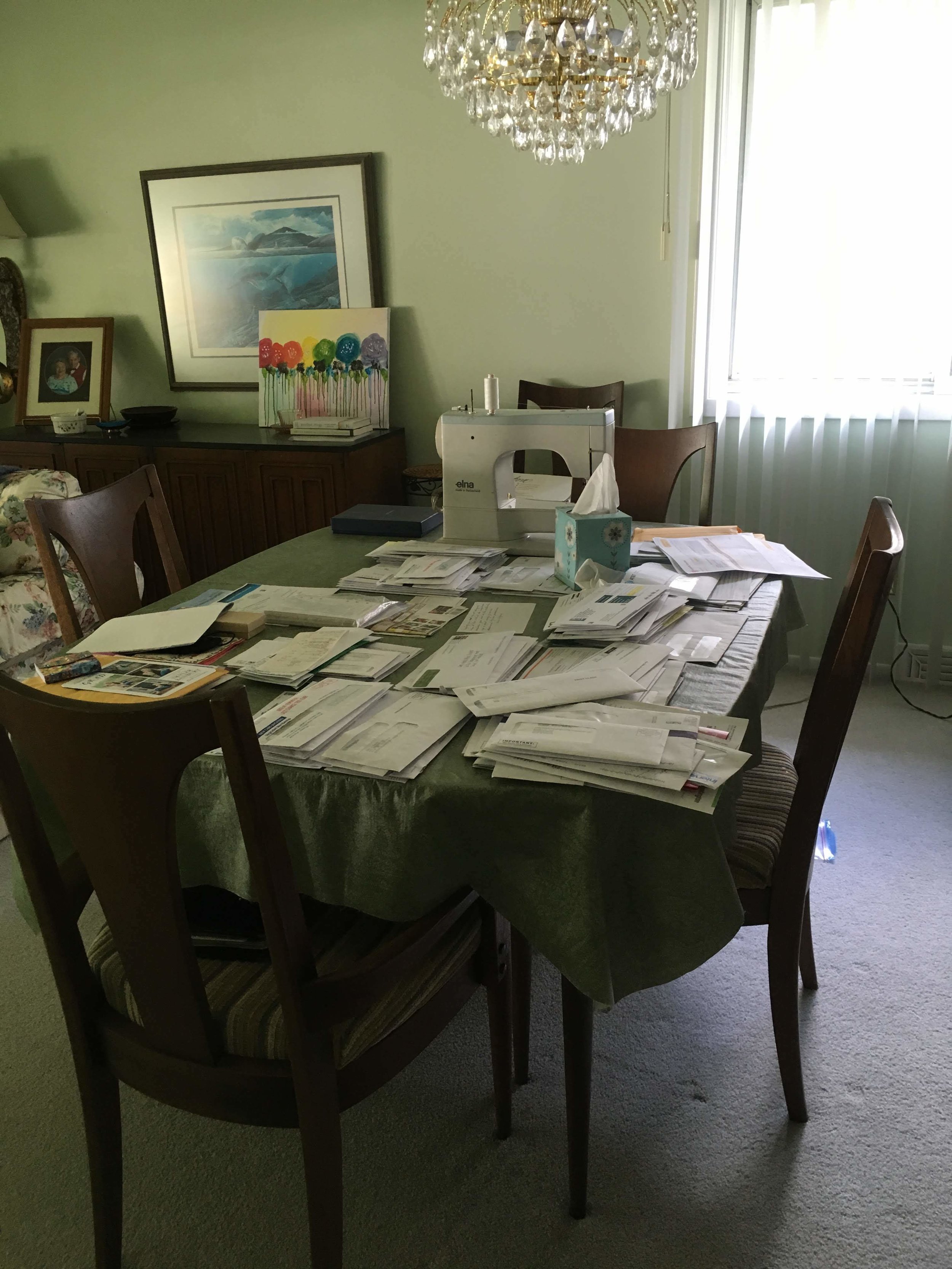How to Tackle Tidying Papers!
/If you know anything about the KonMari Method(™) you know we tidy by category, not location. After you’re done with the first two categories, clothes and books, which are both FUN, you have to move on to……. PAPER! It used to be the category I dreaded most. It’s so tedious. You can spend HOURS on it with seemingly little to show for your efforts. You have to look at Every. Single. Paper. Sometimes I’m just sitting or standing next to my client while they go through Every. Single. Paper. For hours! Check these out:
Looks exhausting, right? But the miracle is - the results are so SPECTACULARLY SATISFYING that it’s turned into my favorite category!
If If any category is life-changing, it’s this one! And this is why:
The general rule of thumb for handling papers the KonMari way is to discard everything*. (Which also happens to be my favorite thing to do!)
I’m from the generation that didn’t have online banking, automatic bill pay, or Google when we set up our filing systems. I had a file for each of the bills I wrote checks for each month, as well as bank statements, insurance documents, warranties, receipts, and other boring papers. I dutifully filed them away in separate categories...until I didn’t. Because it was boring. They’d stack up in a “to be filed” pile, then after a few months I’d grouchily sort and file them, then pull out and shred the oldest ones. I swore I’d file them right away the next month (I wouldn’t) and remove the oldest one (I didn’t) so I’d always have 12 months of statements just in case I wanted to find out my average monthly expenses (I couldn’t care less.)
And hallelujah, now we don’t need to! We can go online and find out that information quicker than you can say “two-drawer letter-sized lateral mobile metal filing cabinet.”
When I finally went through all our files using the KonMari Method(™), it was like a huge weight was lifted off my shoulders. I ended up with a massive pile of papers to shred and recycle, and burned some others in the backyard. (It’s legal to do that here in Arkansas.) It was glorious!
All those appliance manuals I thought we had to save - gone. Why? Because the first thing we do when we need to find out why our dishwasher is flashing a weird code is Google it. If we need to fix something, we check out YouTube tutorials.
*There are a FEW things you need to keep. And of course, (disclaimer) ask your lawyer or accountant for their advice about what you should keep.
In The Life-Changing Magic of Tidying Up, Marie Kondo recommends:
“Dispose of everything that does not fall into one of three categories:
1. Currently in use (take action)
2. Needed for a limited period of time (save temporarily)
3. Must be kept indefinitely (save long-term)”
Just like any other category, we gather everything into one place. This can be tricky because we tend to shove papers everywhere. Do your best to get all of them out of every cabinet and drawer. Trust me, you’ll be glad you did. If you have a ton of papers, maybe make your gathering spot somewhere other than your dining room table in case it takes a little longer than you expect. If you need to, pull all the papers from one area at a time if getting everything out at once would terrify you.
Grab a little pad of these bad boys, a pen, four empty boxes, and 3 file folders. I usually make these labels for the boxes:
SHRED | RECYCLE | TRASH | SENTIMENTAL
Then make 3 files with these labels for the things you’re keeping (other than sentimental papers):
Take Action
Save Temporarily
Save Forever
We have a small wire file box for our papers. This is all of them, including our tax returns from the last 3 years. (That’s all the IRS says you have to save, but if you feel better saving a few more years, do what makes you comfortable.)
We have some separate files for our business, but not many! It is a good idea though to keep business and personal papers separate.
I used these magazine files for my mom:
Once you get your boxes and files ready, let the sorting begin. It goes much more quickly than you think it will, but be prepared to spend some time in this category, and take breaks often to get up and stretch.
What do you put in the 3 folders? Here are some examples:
Take Action
forms to fill out
bills to pay
invitations that need RSVPs
Things you plan to read soon
Save Temporarily
Warranties
Tax returns
Insurance papers
Save Long Term
Wills
Birth/Marriage certificates
Pink slips for cars
Passports
Things with stamps or seals
Once you’ve gone through everything, give yourself a big ol’ pat on the back! It’s hard work, but so worth it! Now when you need to find a paper you’ll be able to locate it in minutes, mail that looks boring won’t stack up on the kitchen counter, you won’t misplace bills and end up with late fees because they were lost in the shuffle. All your wildest dreams will come true!
To KEEP your beautifully organized papers beautifully organized, so you never have to go through this horror again, here are some tips:
When you get your mail, stand over your recycling bin and toss the things you know you can recycle right away.
Take the rest inside, open it, and immediately either take action, recycle, or file it right away. We got a redactor at The Container Store so we can quickly block out our name and address on things that might be a security risk, then put them straight in the recycling.
If you can’t take action on something right away, put it in the “take action” file. You might want to decide on a day each week that you’ll go through this file. This is called anchoring. It allows you to not worry about the things in the file all week, because you know you’ll handle it every Thursday for example. The goal is to always have this file as empty as possible.
That’s it! It’ll feel so good when it’s all done, I promise!
If you find yourself flying through the clothes and books categories, but get stalled on this one, think about calling for help. Of all the categories, I think this is the most difficult to do on your own. We LOVE helping people make it through to the other side.
Happy tidying!
Sue Fehlberg is Arkansas’ only Certified KonMari Consultant










